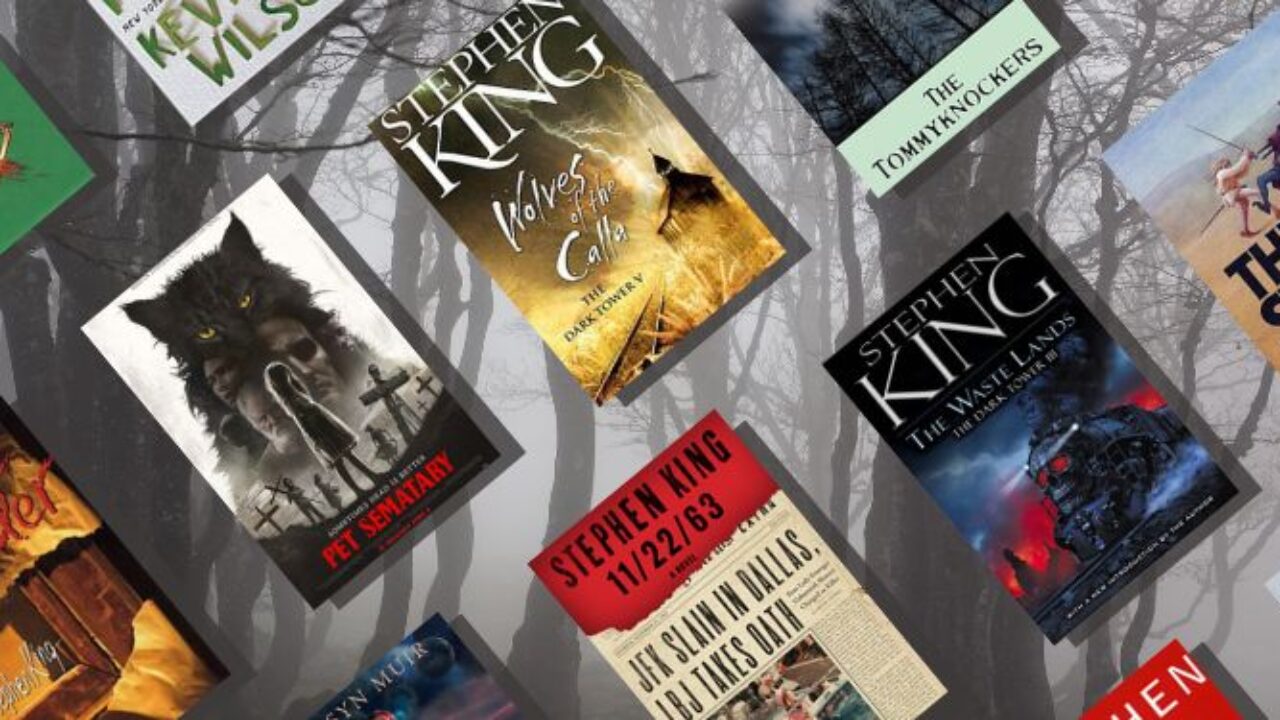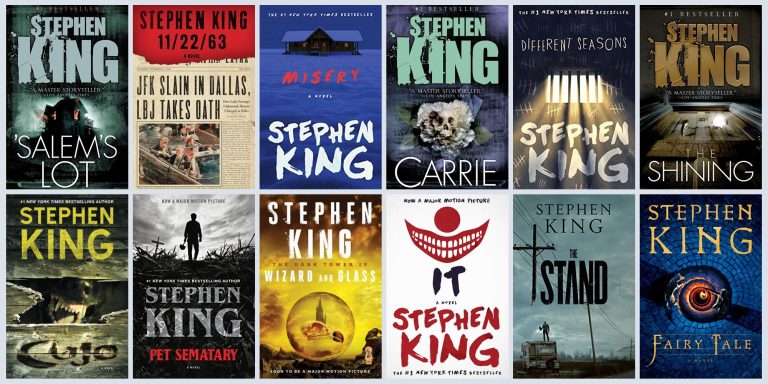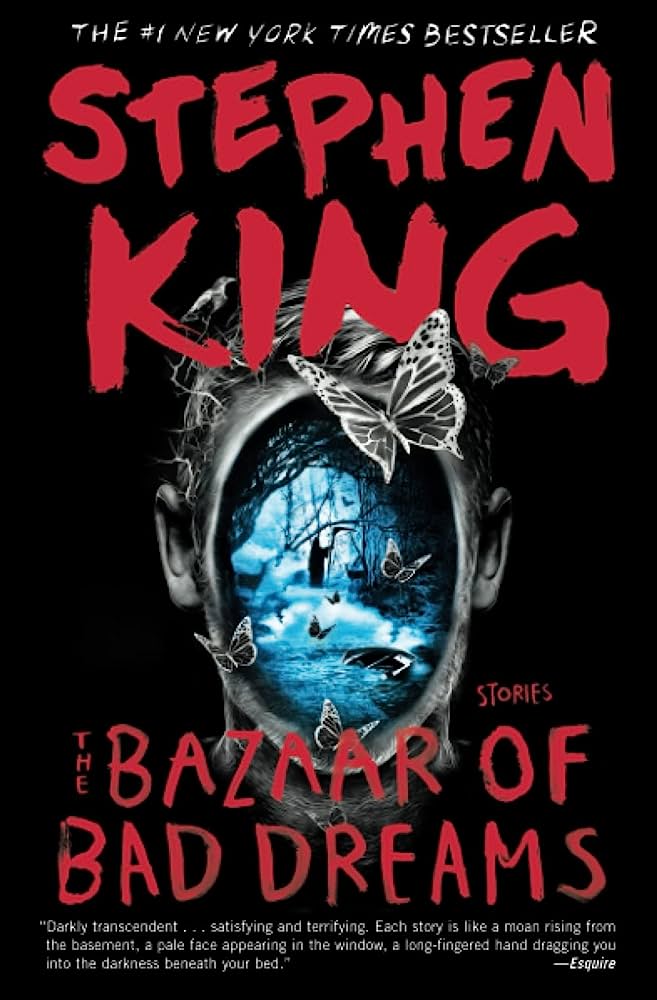Into The Shadows: Stephen King’s Books With Ambiguous Endings
Welcome to the mysterious and captivating world of Stephen King, where the boundaries between reality and the supernatural blur into the shadows. In this article, we will delve into the realm of Stephen King’s books with ambiguous endings, leaving readers pondering long after they’ve turned the final page.
Stephen King, the master of horror and suspense, has an uncanny ability to craft stories that leave us questioning our own perceptions of what is real. His knack for creating ambiguous endings adds an extra layer of intrigue to his already gripping narratives. From “The Shining” to “Pet Sematary,” King’s books have captivated readers for decades, drawing them into a world where nothing is as it seems. So, grab your flashlight and prepare to journey into the shadows with us as we explore Stephen King’s books with endings that leave us haunted and hungry for answers.
But what makes these ambiguous endings so compelling? Is it the suspense of the unknown or the thrill of unraveling the hidden truths? Join us as we navigate the labyrinthine plots of Stephen King’s novels and uncover the secrets lurking within. From the heart-pounding terror of “It” to the spine-chilling suspense of “Misery,” these books will keep you on the edge of your seat, eagerly turning pages to discover what lies beyond the darkness. So, get ready to immerse yourself in the enigmatic world of Stephen King’s books with ambiguous endings, where the line between reality and imagination fades into obscurity.

Into the Shadows: Stephen King’s Books with Ambiguous Endings
Stephen King is renowned for his ability to captivate readers with his thrilling and suspenseful storytelling. One of the aspects that sets his novels apart is the way he leaves the endings open to interpretation. In this article, we will delve into some of Stephen King’s books with ambiguous endings, exploring the intrigue and speculation they generate.
The Dark Tower Series: A Multiverse of Uncertainty
The Dark Tower series is a masterpiece of fantasy and horror, spanning eight books and countless dimensions. Throughout the series, King weaves a complex narrative that leaves readers questioning the ultimate fate of its protagonist, Roland Deschain, and the fate of the Tower itself. With its blend of Western, sci-fi, and fantasy elements, the series keeps readers on the edge of their seats, constantly wondering about the true nature of reality and the significance of their journey.
In the final book, “The Dark Tower,” King introduces a metafictional element, blurring the lines between the author and the character. This adds an extra layer of uncertainty, as readers are left to ponder the implications of the story’s conclusion. The ambiguous ending of the series has sparked countless debates and theories, making it a prime example of King’s ability to leave his audience in suspense.
The Shining: The Ghostly Maze of Redemption
“The Shining” is one of King’s most iconic novels, exploring themes of isolation, madness, and the supernatural. The story follows Jack Torrance, a struggling writer who becomes the caretaker of the Overlook Hotel during the winter months. As the hotel’s dark history begins to influence Jack, his grip on reality becomes increasingly tenuous, leading to a chilling climax.
The ending of “The Shining” leaves readers with many unanswered questions. Is the hotel truly haunted, or is it all a manifestation of Jack’s deteriorating mental state? The ambiguity of the ending allows for multiple interpretations, leaving readers to grapple with their own theories and conclusions. This open-endedness adds to the psychological depth of the novel, inviting readers to explore the depths of their own fears and anxieties.
The Stand: A Journey of Good and Evil
“The Stand” is an epic tale of a post-apocalyptic world ravaged by a deadly pandemic. The novel follows a diverse group of survivors as they navigate the desolate landscape and confront the forces of good and evil. King expertly crafts a narrative that blurs the lines between morality and chaos, leaving readers questioning the ultimate resolution of the story.
In “The Stand,” the battle between the forces of light and darkness reaches a climactic showdown. However, the aftermath is left open to interpretation, with the fate of the characters and the world hanging in the balance. This ambiguity allows readers to contemplate the nature of good and evil, leaving them with a sense of unease and lingering questions.
Carrie: A Tale of Power and Revenge
“Carrie” is Stephen King’s debut novel and a chilling exploration of telekinetic powers and the consequences of bullying. The story revolves around Carrie White, a high school student with a troubled home life who discovers her ability to move objects with her mind. As she faces relentless torment from her classmates, Carrie’s powers escalate, leading to a cataclysmic event.
The ending of “Carrie” is both shocking and ambiguous. As the chaos unfolds, the narrative shifts to various perspectives, leaving readers uncertain about the ultimate outcome. This deliberate ambiguity allows for multiple interpretations, highlighting the destructive power of unchecked emotions and the consequences of societal neglect. It leaves readers pondering the boundaries of power and the thin line between victim and villain.
In conclusion, Stephen King’s books with ambiguous endings offer readers a captivating and thought-provoking experience. The open-endedness of these novels allows for personal interpretation, sparking discussions and theories among fans. Whether it’s the enigmatic conclusion of “The Dark Tower” series or the haunting uncertainty of “The Shining,” King’s ability to craft stories that linger in the shadows of the reader’s mind is unparalleled. So, dive into the world of Stephen King and embrace the ambiguity that lies within.
Key Takeaways: Into the Shadows – Stephen King’s Books with Ambiguous Endings
- Stephen King is a famous author known for his thrilling and suspenseful books.
- Many of Stephen King’s books have endings that leave readers guessing and open to interpretation.
- Ambiguous endings can be frustrating but also create a sense of mystery and leave room for personal imagination.
- Some popular Stephen King books with ambiguous endings include “The Dark Tower” series, “The Shining,” and “Carrie.”
- Embracing the ambiguity in Stephen King’s books allows readers to dive deeper into the story and explore different meanings.
Frequently Asked Questions
1. What are some of Stephen King’s books with ambiguous endings?
Stephen King is known for his ability to keep readers guessing until the very end. Some of his books with ambiguous endings include “The Dark Tower” series, “The Shining,” “Pet Sematary,” “Misery,” and “The Stand.” In these novels, King leaves certain plot points unresolved or open to interpretation, allowing readers to draw their own conclusions.
For example, in “The Dark Tower” series, the fate of the main character, Roland Deschain, is left uncertain. Readers are left to speculate on whether he achieves his ultimate goal or if he is trapped in a never-ending cycle. Similarly, in “The Shining,” the final scene leaves the fate of Jack Torrance’s soul in question, leaving readers to ponder the supernatural forces at work.
2. Why does Stephen King use ambiguous endings in his books?
Stephen King is a master of suspense and thrives on keeping his readers on the edge of their seats. By using ambiguous endings, King allows readers to continue thinking about the story long after they have finished reading. These open-ended conclusions spark discussion and debate among readers, creating a sense of engagement and excitement.
Additionally, ambiguous endings can be seen as a reflection of real life. Just as life rarely offers clear-cut resolutions, King’s ambiguous endings mirror the complexities and uncertainties of the human experience. By leaving certain aspects of the story unresolved, King invites readers to ponder the deeper themes and meanings within his work.
3. Are ambiguous endings frustrating for readers?
Ambiguous endings can be polarizing among readers. Some may find them frustrating, as they crave closure and a clear resolution to the story. However, for many fans of Stephen King’s work, the ambiguity is part of the appeal. It allows for personal interpretation and encourages readers to actively engage with the text.
Ambiguous endings also have the power to stay with readers long after they have finished the book. The unanswered questions and unresolved plot points can spark conversations and debates, keeping the story alive even after the final page has been turned.
4. What impact do ambiguous endings have on the overall reading experience?
Ambiguous endings can enhance the overall reading experience in several ways. Firstly, they create a sense of anticipation and suspense, as readers are left wondering about the fate of the characters and the resolution of the plot. This keeps readers engaged and invested in the story until the very end.
Furthermore, ambiguous endings can provoke deeper thought and reflection. They leave room for interpretation, allowing readers to analyze the themes and symbolism within the book and draw their own conclusions. This adds an extra layer of intellectual stimulation to the reading experience.
5. Do all of Stephen King’s books have ambiguous endings?
No, not all of Stephen King’s books have ambiguous endings. While he is known for his ability to craft suspenseful and thought-provoking stories, some of his novels do offer more conclusive endings. Examples of books with more definitive conclusions include “The Green Mile,” “Carrie,” and “11/22/63.”
It is worth noting, however, that even in books with clear resolutions, King often leaves room for interpretation and explores complex themes that may linger in the minds of readers long after they have finished the book.
8 Alternative Endings To Stephen King Novels That Were Originally Planned
Final Summary: Stephen King’s Enigmatic Endings
As we delve into the shadows of Stephen King’s captivating novels, we are met with a common thread that binds them together—ambiguous endings. King has mastered the art of leaving readers guessing, provoking contemplation long after the final page has been turned. These enigmatic conclusions invite us to immerse ourselves in the depths of his stories, challenging our perceptions and leaving room for interpretation.
One of the reasons King’s books with ambiguous endings resonate so profoundly with readers is the sense of mystery and open-endedness they evoke. The uncertainty lingers in the air, allowing our imagination to run wild as we ponder the countless possibilities that lie beyond the final words. It’s like having a tantalizing puzzle in front of us, and we can’t help but engage in a mental game of connecting the dots.
King’s ability to craft intricate narratives while leaving loose ends untied showcases his mastery as a storyteller. By not offering a neat and tidy conclusion, he invites us to participate actively in the storytelling process. We become detectives, piecing together clues and constructing our own versions of the truth. This engagement keeps us invested in the story long after we’ve closed the book, discussing theories with fellow readers and eagerly awaiting the next installment.
In the realm of Stephen King’s novels, ambiguity reigns supreme. These uncertain endings challenge our perceptions, ignite our imagination, and keep us coming back for more. So, as we bid farewell to the shadows and close the chapter on another mesmerizing tale, let us embrace the beauty of the unknown and revel in the endless possibilities that Stephen King’s books with ambiguous endings offer.





